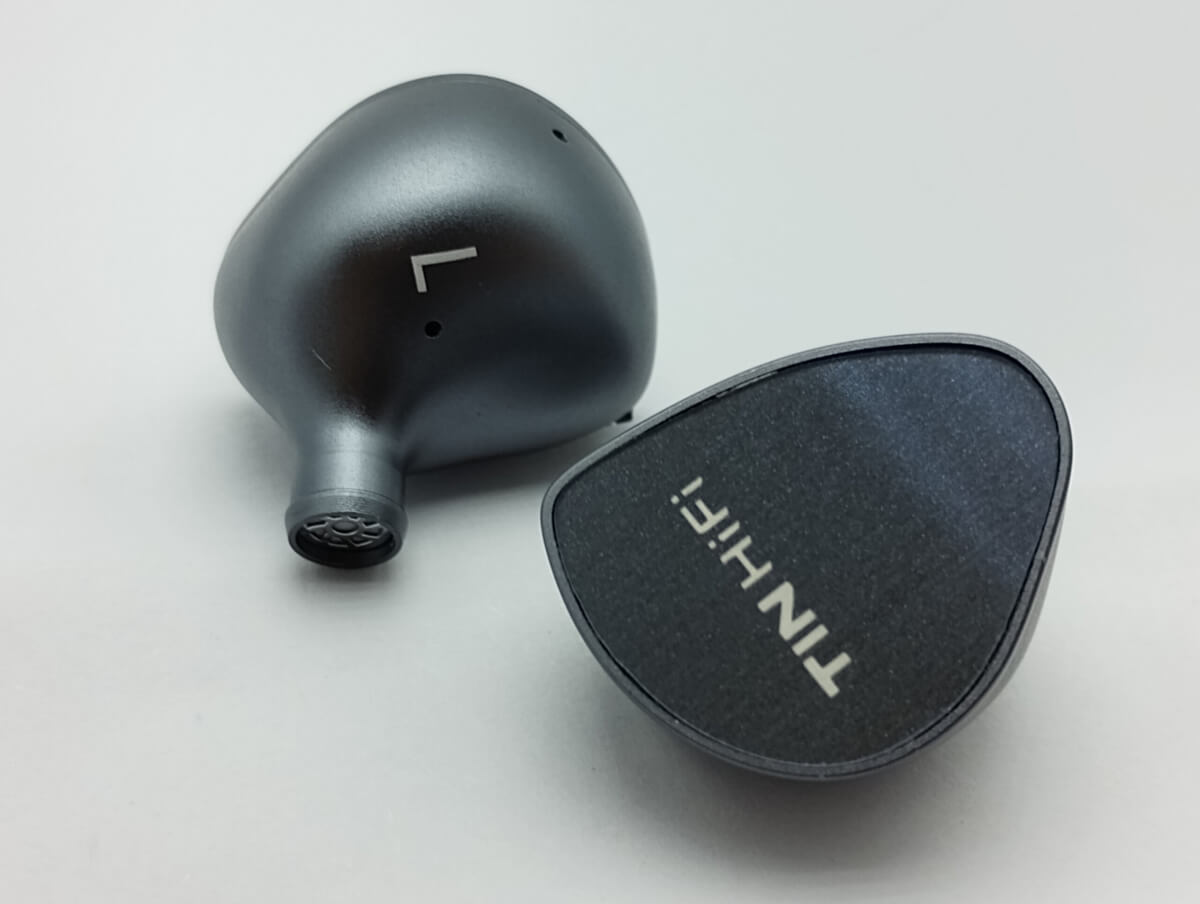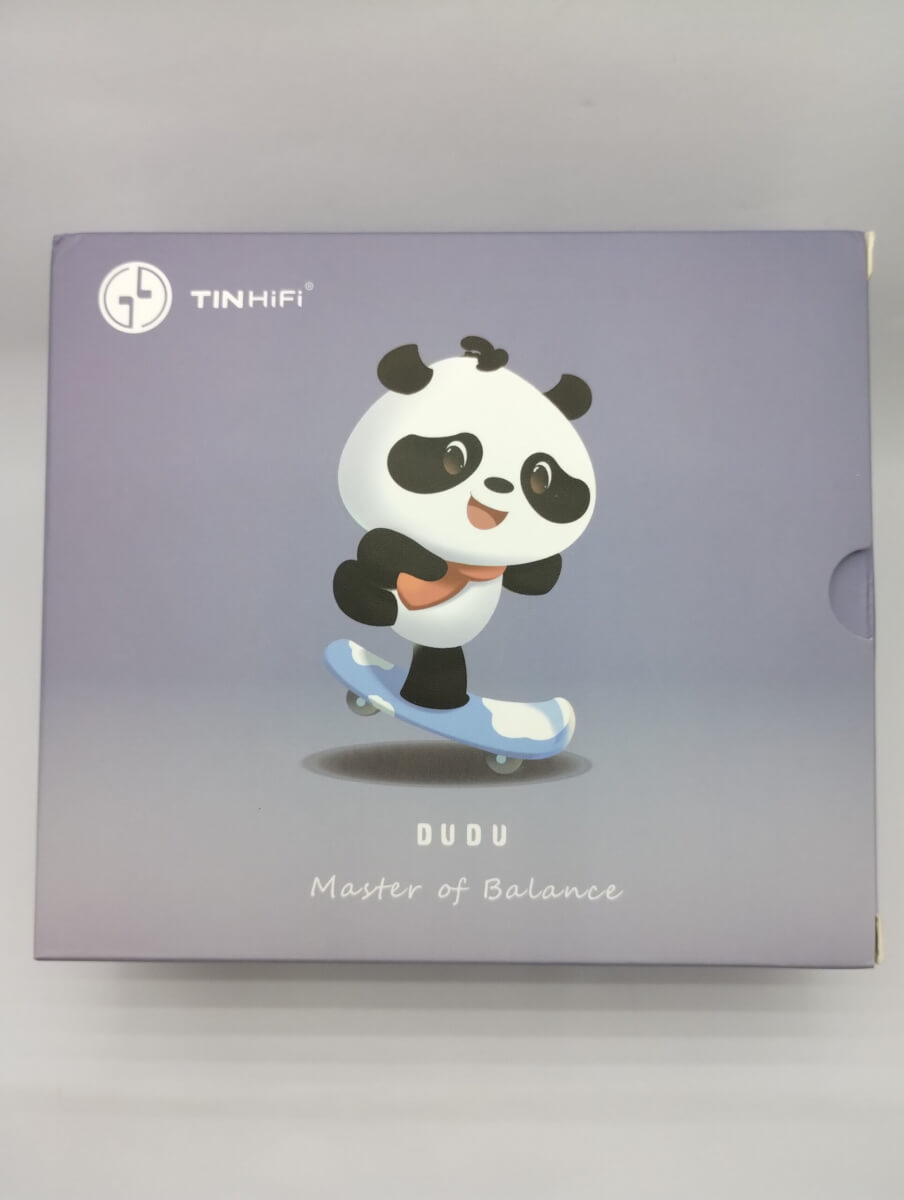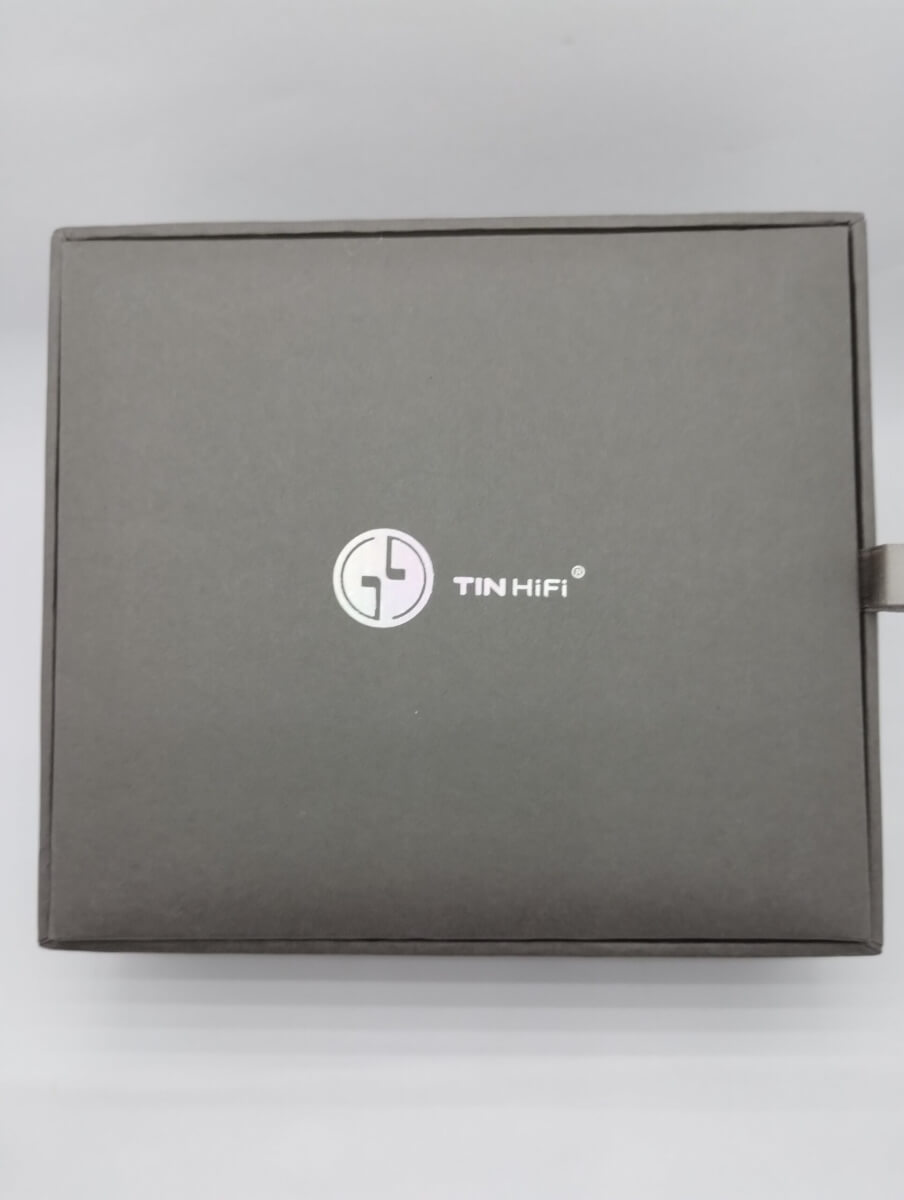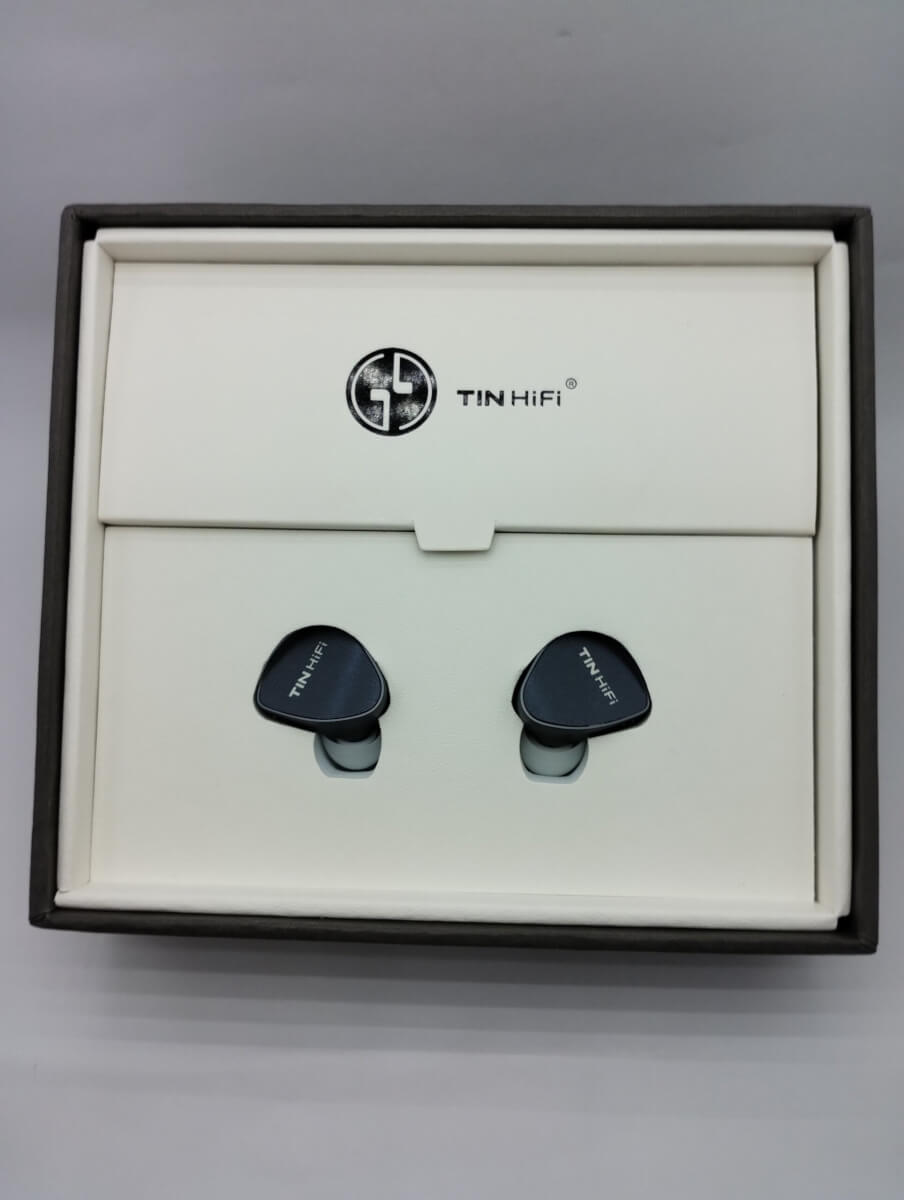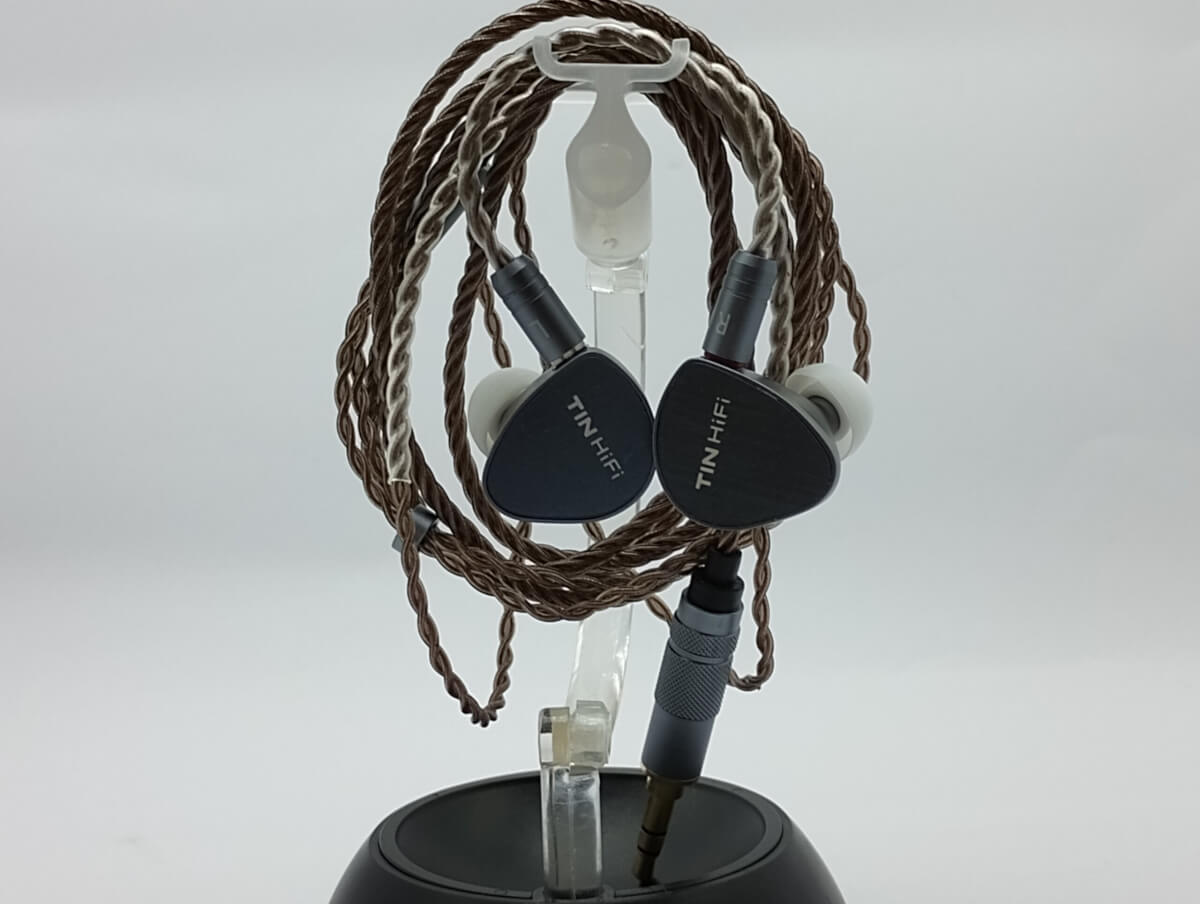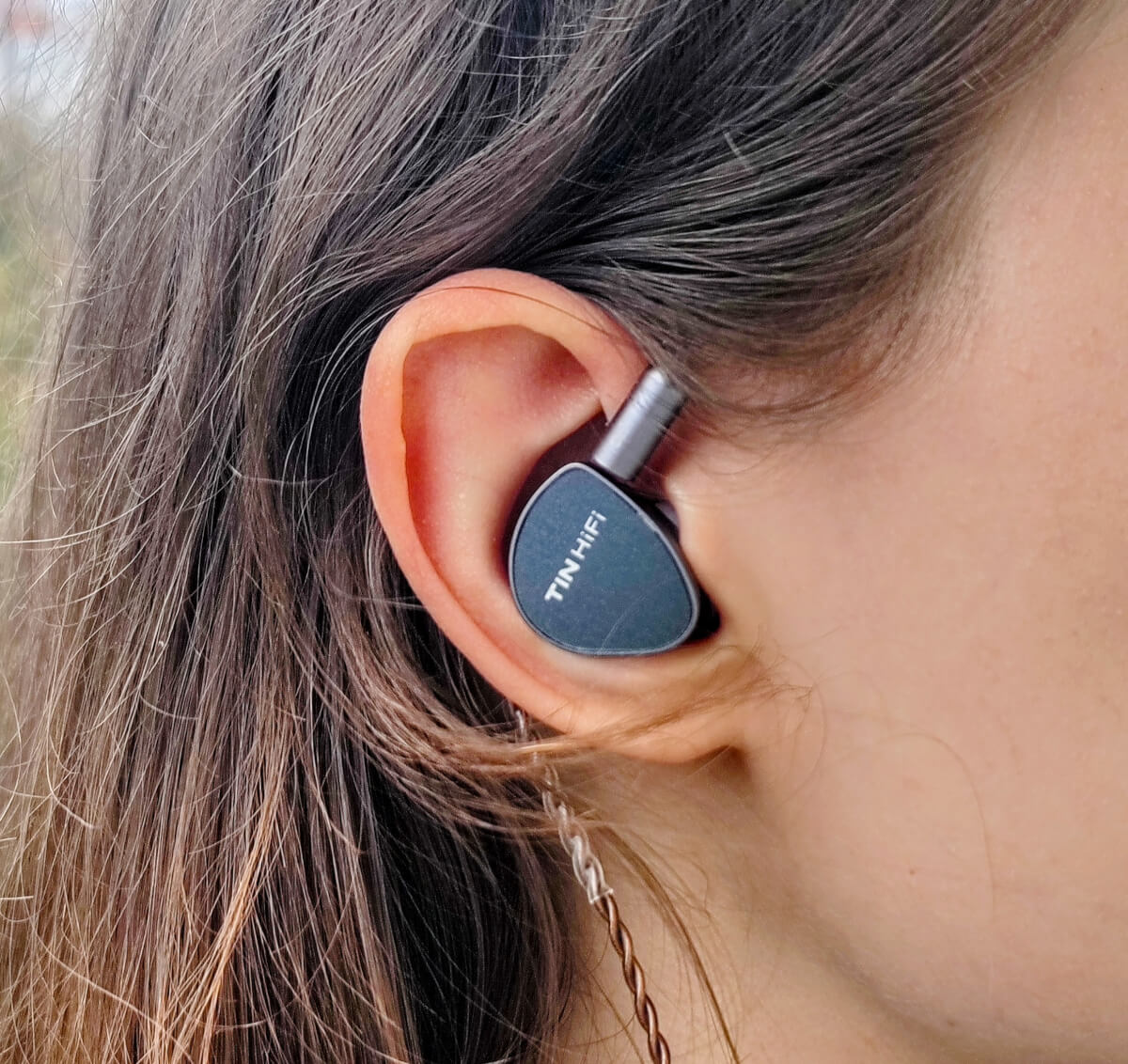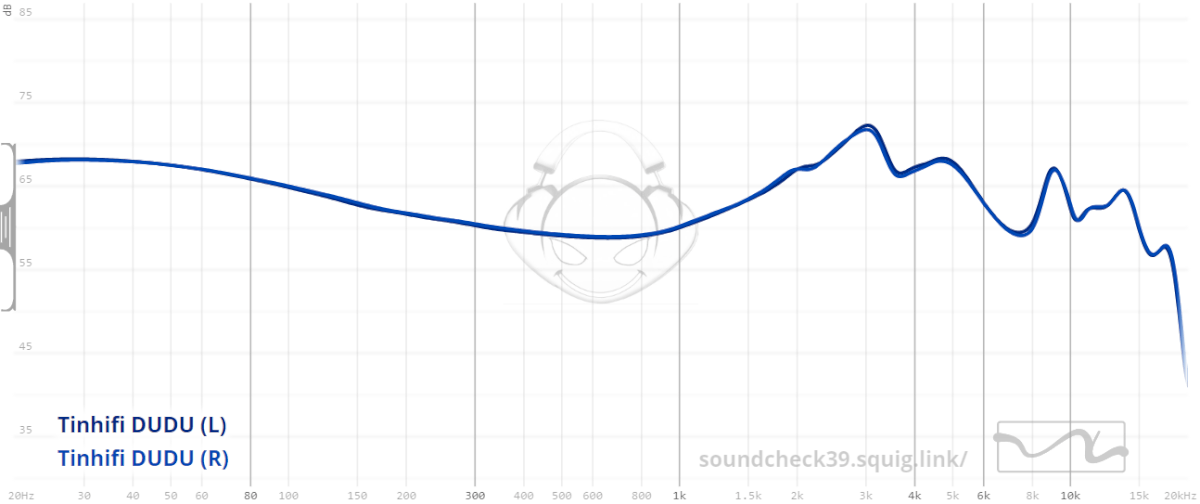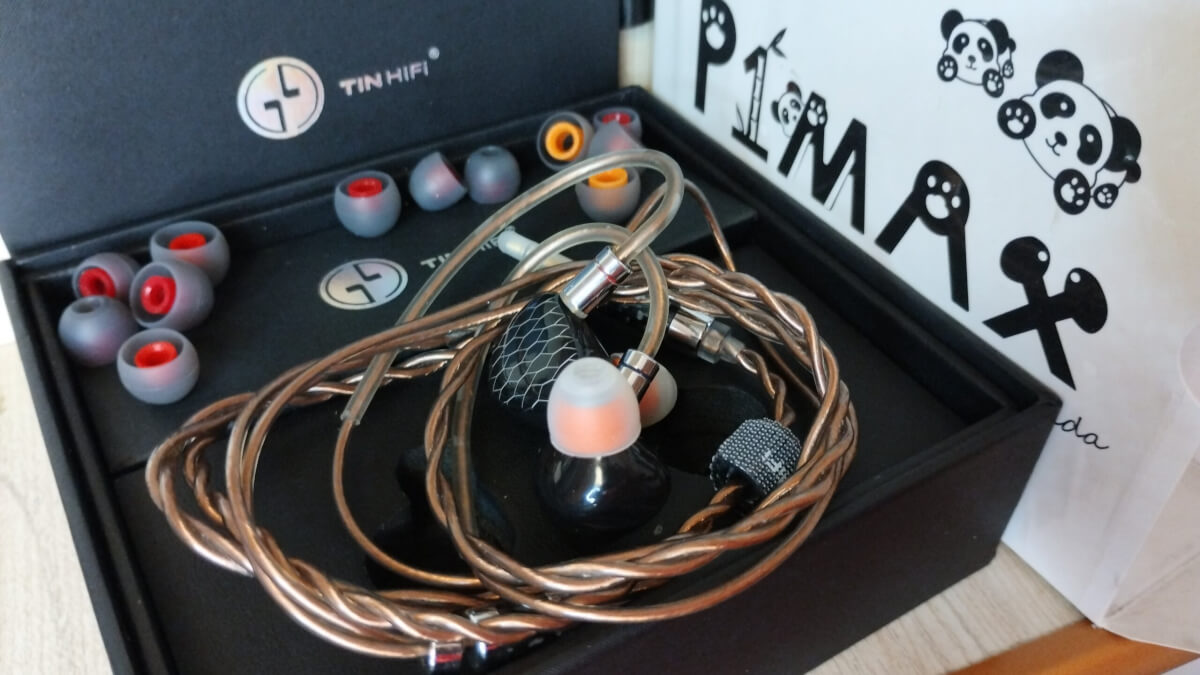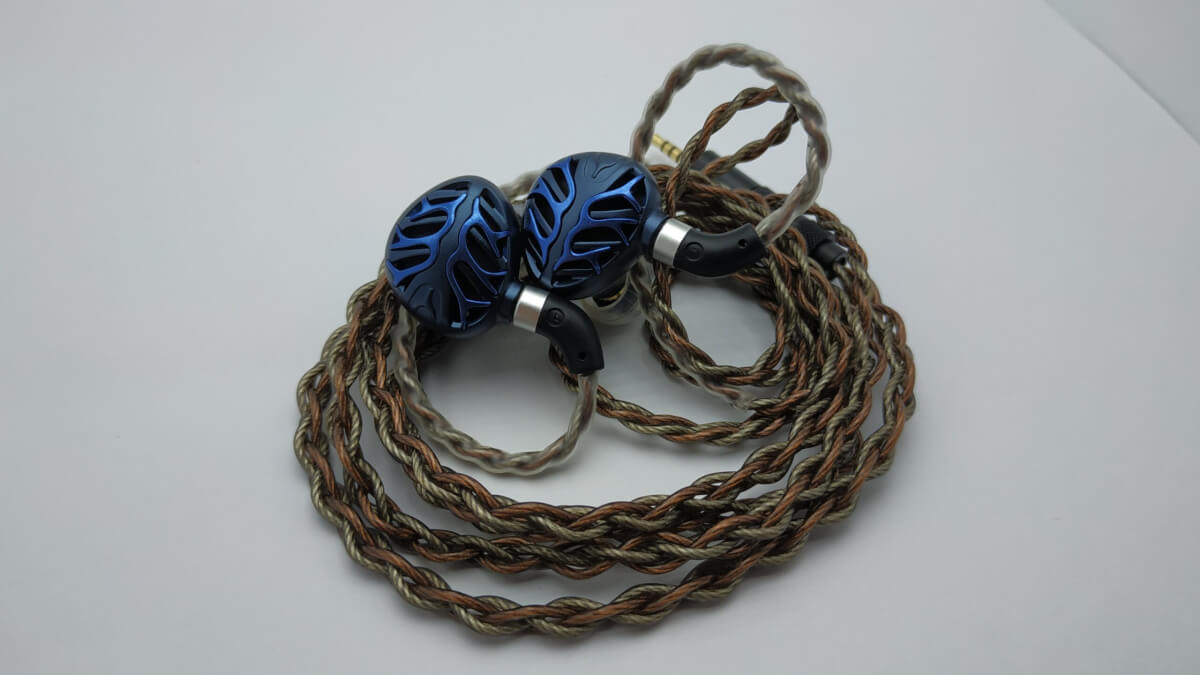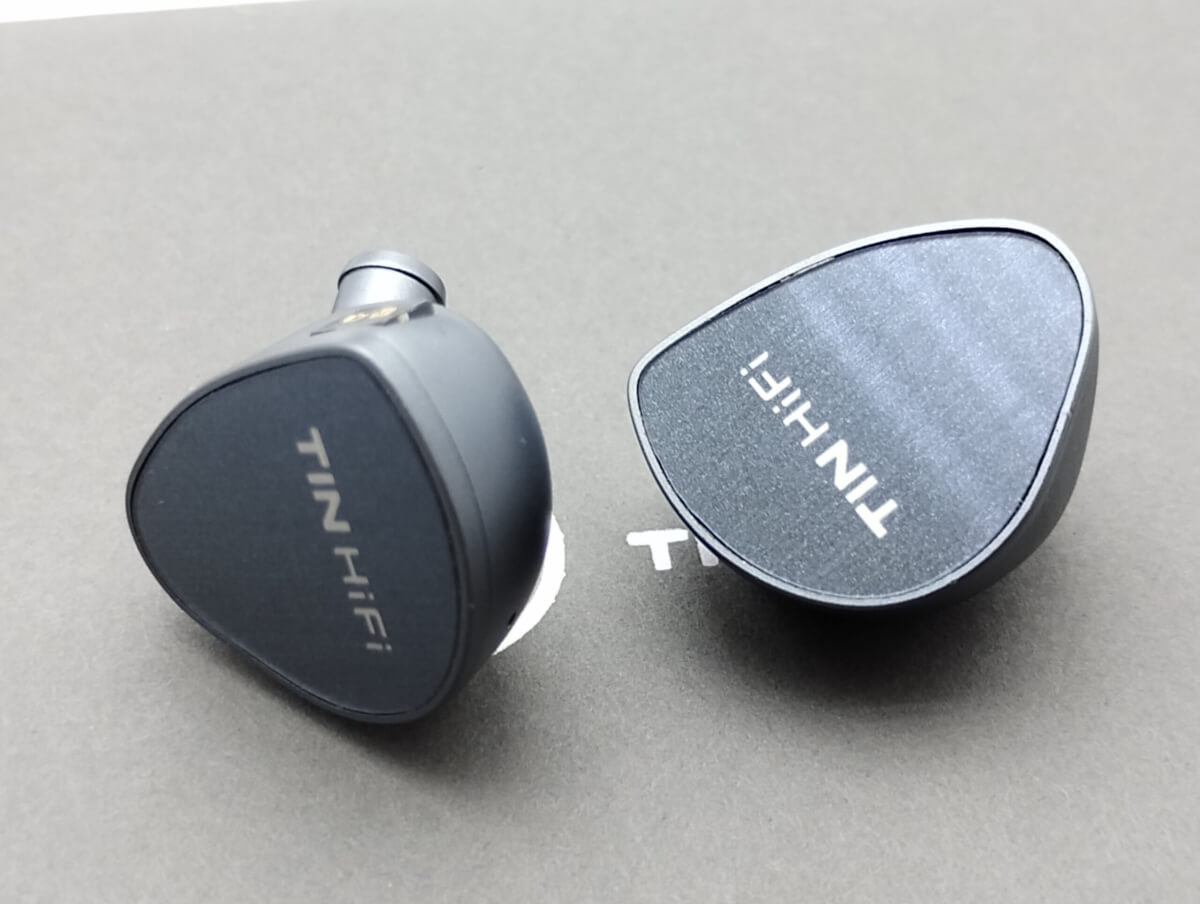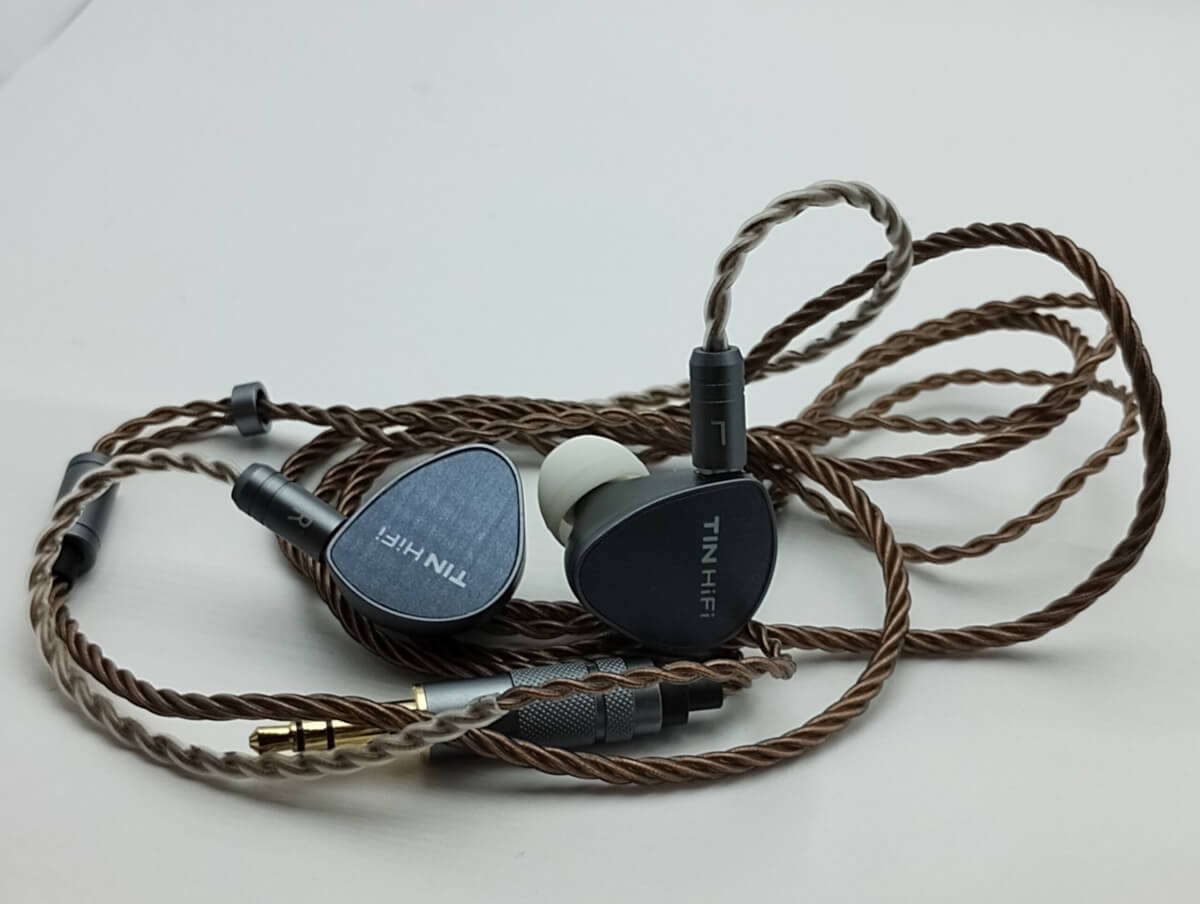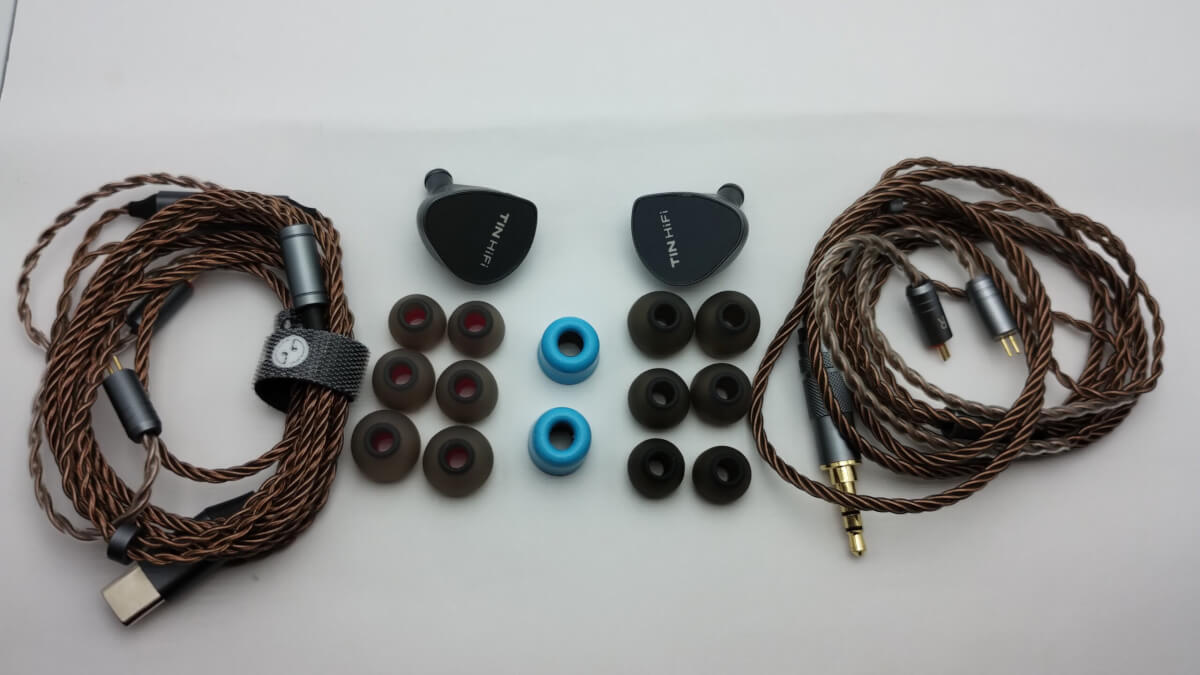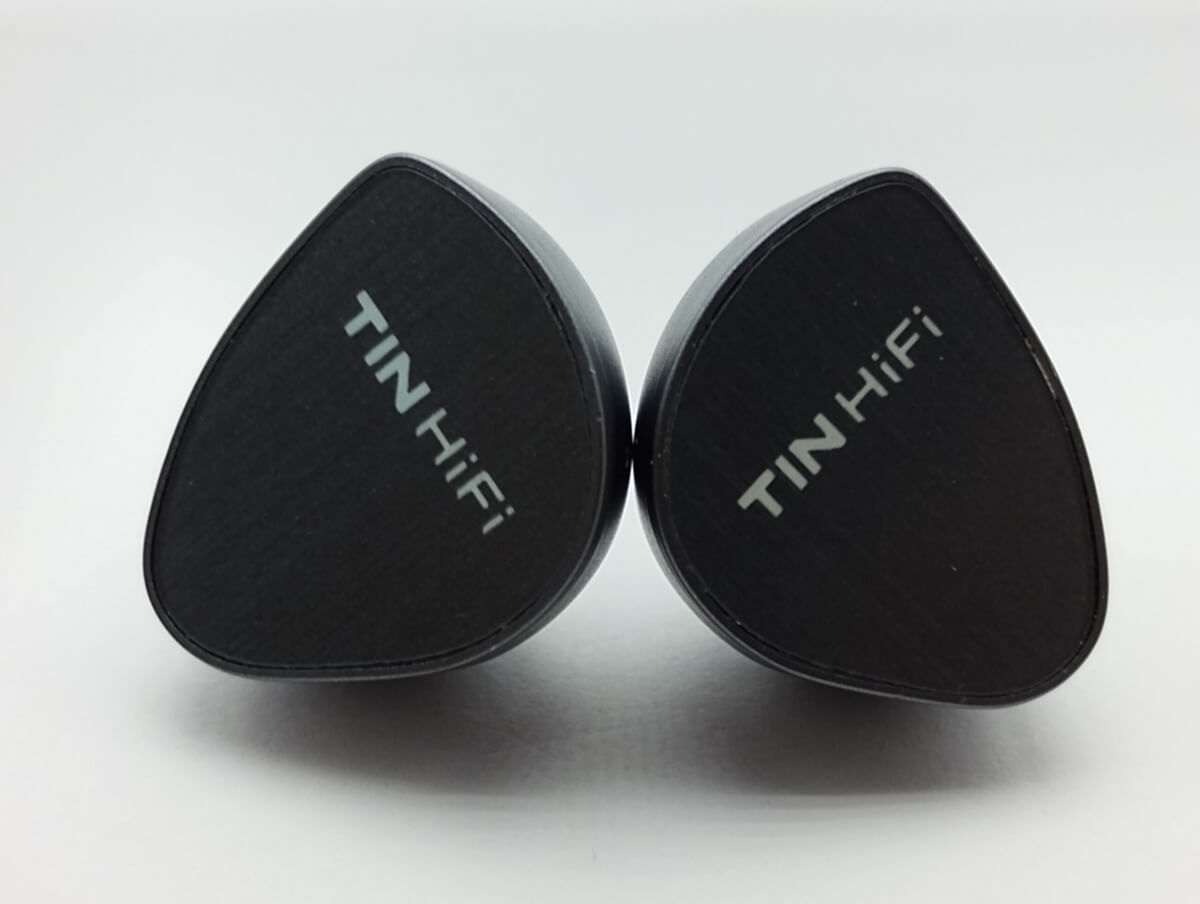Well-detailed sound with textured bass, complemented by accentuated high frequencies
- Nice bass
- Lucid highs
- Good accessory bundle
- Comfortable fit
- Muffled midrange
- Thin, prone to tangling cable
TINHIFI DUDU In-Ear Headphones – Sound
The headphones have an impedance of 32 ohms and a sensitivity of 103 dB, so I do not recommend using them with weak sources like a smartphone. The TINHIFI DUDU will only fully reveal their potential on devices with a good amplifier.
Due to the planar driver, I got the impression that the headphones sound like a clock or metronome, accurately reproducing the music without adding extended attacks or decays. The sound of the DUDU can be described as V-shaped, with a presentation close to the Harman target curve, featuring pleasant emphasis on the high frequencies.
My sound preferences are oriented towards maximum accuracy to the original sound, without adding effects or enhancements. This is why I chose the Questyle QP1R as my main source—it provides the most reference-like sound and closest to the original.
- Low Frequencies — 8: thanks to the planar driver, the bass is characterized by its texture and depth of detail. The sub-bass has texture and speed, clearly expressing its attacks and decays, not dominating but rather accentuating the low frequencies. The mid-bass is precise and sufficiently deep, without overwhelming or tiring with its volume. It slightly overlaps the lower part of the midrange frequencies, but only in tracks with heavy bass. The bass is especially well-revealed in the track “Chameleon” by Early Worx.
- Mid Frequencies — 7.5: the midrange sounds linear, with male and female voices presented evenly with natural tonal qualities, without overlapping, and with pleasant and natural timbres. However, due to the V-shaped frequency response, there may be a tendency to increase the volume for vocal parts after listening to low-frequency tracks. Trumpets sound with a nice metallic tint, and electric guitars offer timbral variety. The planar driver’s limitation related to frequency accuracy and precise timing intervals becomes particularly noticeable in the midrange. As a result, the mid frequencies may seem less melodic and more synthesized. All nuances of the midrange are clearly heard in the track “Shape of My Heart” by Sting.
- High Frequencies — 8: the TINHIFI DUDU indeed offer good detail and clarity in the high frequencies, but occasionally may exhibit some sharpness in the “s” sounds. There is also a slight sibilance echo, especially on recordings with pronounced high frequencies. This adds a sharpness to the sound that may become noticeable during extended listening at high volumes. However, these characteristics do not overshadow the overall transparency and airiness typical of planar drivers. The track “Bubbles” by Yosi Horikawa is suitable for testing high frequencies.
- Detail — 7.5: the TINHIFI DUDU are above average in their price range, capturing the finest nuances of sound. Thanks to the planar drivers, instruments and vocals are clear and distinct. Occasionally, the emphasis on high frequencies can highlight details without harshness or intrusion. Overall, the DUDU exhibit sufficient resolution, especially on clean and high-quality recordings.
- Soundstage — 7.5: the TINHIFI DUDU offers an average width and depth. The headphones create clear positioning of instruments and vocalists with a wide soundstage but mediocre depth. For their price range, the soundstage can be considered exemplary. High frequencies add brightness to the depiction of sound images, enhancing overall clarity.
- Conclusion: the TINHIFI DUDU are well-suited for listeners who value good detail and bright high frequencies. They will be especially comfortable for those who prefer planar drivers for their precision and airiness of sound. These headphones handle a variety of genres well, including classical music, jazz, and acoustic compositions. They are also suitable for fans of electronic and pop music, where good high-frequency reproduction and clear detailing are required. If you are looking for headphones with a V-shaped frequency response close to Harman’s target and accented with high-frequency notes, the DUDU could be an excellent choice.
The headphones come with an additional cable featuring a Dongle DSP processor, which adds a more emotional presentation to the sound but at the expense of detail and soundstage resolution. In my opinion, this accessory has little appeal among audiophiles, as it emphasizes emotional impact at the cost of sound quality.
Comparison with competitors
TINHIFI DUDU offer bright and detailed sound with an emphasis on high frequencies, making them an excellent choice for classical and jazz music. On the other hand, TINHIFI P1 MAX, despite their balanced sound with deep bass, have more subdued midrange frequencies, making them less melodic but more detailed. The soundstage of P1 MAX is better positioned, with more precise placement of artists and instruments, which enhances the spatial perception.
TRN Azure Dragon stand out with their bright high frequencies and pronounced sibilance, which makes their sound sharper and more detailed. In contrast, TINHIFI DUDU provide a more balanced sound with good detail and less emphasized high frequencies, making their sound more comfortable. The bass of Azure Dragon is muted and less expressive compared to DUDU. Although TRN Azure Dragon are almost twice as expensive, have a premium appearance, and come with an expanded package, TINHIFI DUDU are preferable in terms of sound quality.
Design, kit and comfort – TINHIFI DUDU
The packaging of the DUDU headphones is standard for TINHIFI. The front panel features a panda riding a skateboard with the signature DUDU, while the back side features an assembly drawing of the earpiece design.
The included cables with Type-C and 3.5mm Jack connectors are equipped with quality connectors colored to match the headphones, with gold-plated connectors. The wires are thin and prone to tangling but do not cause microphonic effects, and the sound quality remains satisfactory. In my opinion, it would have been more logical to include one high-quality cable with various connectors instead of two thin and less durable ones. The package also includes 6 pairs of silicone earpads (sizes S, M, and L) with different colors for the central nozzle hole, as well as one pair of blue foam earpads.
- Comfort: the headphones provide a high level of comfort, and extended wear does not cause discomfort. However, the earpads may slide down the sound nozzle, reducing the length of the nozzle when wearing, which led to a deduction of points.
- Package: it is not particularly extensive or impressive, but it is sufficient and meets the needs of most users. Points were deducted for the thin, tangle-prone cable.
Design – 8
Comfort – 10
Kit – 8
TINHIFI DUDU Specifications
- Planar driver 13 mm.
- Sensitivity: 105dB.
- Frequency range: 20 Hz – 20 kHz.
- Impedance: 27 ohms.
- 5N silver-plated copper cable.
- Headphone jack: 0.78 mm, 2-pin.
- Interchangeable device plugs: Jack 3.5mm and Jack 4.4mm.
What’s in the TINHIFI DUDUbox ?
A commendable package:
- Headphones.
- Wire.
- Interchangeable Jack 3.5mm and Jack 4.4mm connectors to the cable .
- Three types of ear cushions:
Celest 221 Vocal Eartips: Enhance high frequencies, improve vocals,
Celest 608 Balanced Eartips: Balanced and stereo sound,
Celest Foam Eartips: Rich vocals and deeper bass. - Dragon-shaped bookmark.
- Pouch.
- Instructions.
TINHIFI DUDU Headphones Summary
TINHIFI DUDU are excellent headphones with planar drivers that offer vibrant and detailed sound with an emphasis on high frequencies. They are perfect for fans of classical and jazz music. The pleasantly weighty bass and textured mids create a rich and comfortable listening experience, while the clear high frequencies, with their high-toned sounds, will appeal to audiophiles and music enthusiasts. DUDU demonstrate sufficient resolution and sound great across many music genres.
I really enjoyed the sound of the TINHIFI DUDU, I recommend them for purchase.


